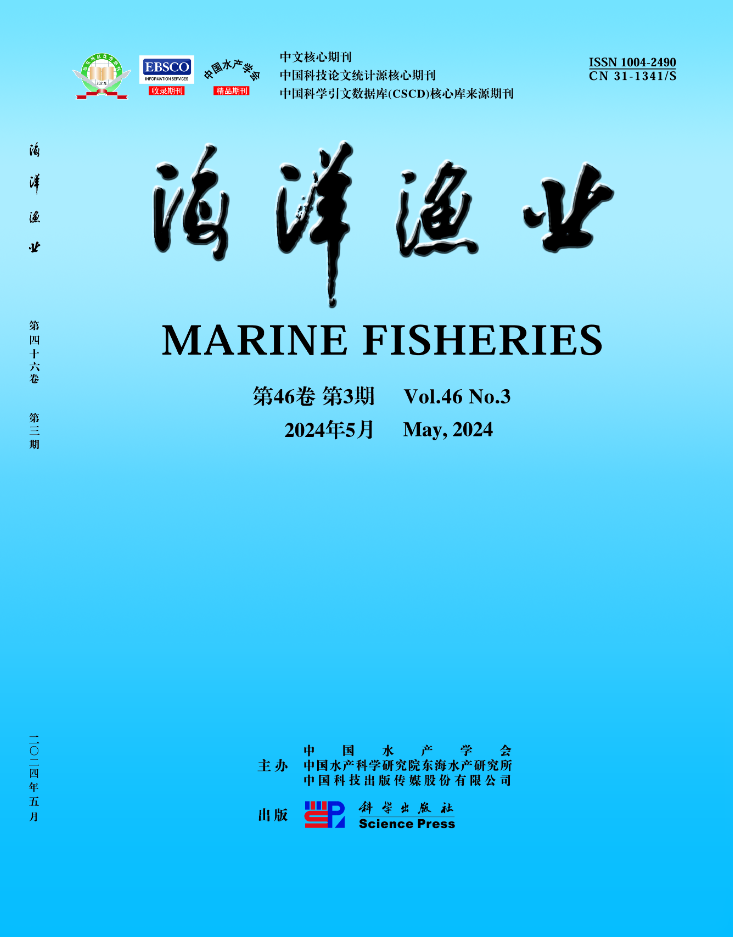POLA PERTUMBUHAN KEPITING BAKAU (Scylla serrata, Forskal 1775) YANG TERTANGKAP BUBU DI SUNGAI SANRANGANG, SULAWESI SELATAN
引用次数: 0
Abstract
The local community has caught mud crabs for years and increased fishing pressures, leading to biological structure changes. Accordingly, studying the growth pattern, condition factors, and structure of mud crab in the Sanrangang River, Takalar Regency, South Sulawesi Province is necessary. This research was conducted from June to August 2020 in the Sanrangang River, Takalar Regency, South Sulawesi Province. This study compared the efficiency and effectiveness of three types of bubu, namely folding bubu, rakkang and wheel bubu based on the experimental fishing by using tilapia as the bait. Data were analyzed by Chi-Square non-parametric test. Results showed that the catch of mud crabs for folding bubu, rakkangs, and wheel bubu was 120; 107; and 110 species. The width and weight of mud crabs’ carapace caught by each bubu were as follows: from folding bubu ranged from 34.07 to 99.02 mm (60.34 ± 15.06 mm) and 21.62 to 389.57 g (92.41 ± 75.38 g); rakkang ranged from 35.09 to 98.51 mm (66.91 ± 13.95 mm) and 21.94-297.29 g (87.86 ± 34.35 g) and wheel bubu ranged from 34.21- 98.11 mm (66.32 ± 16.83 mm) and 22.01-485.45 g (102.17 ± 79.87 g). The growth patterns of the catch from all gear were negative allometric. The condition factors of folding bubu, rakkangs, and wheel bubu ranged from 0.40631-2.3998, 0.4598-2.4553 and 0.4962-3.1098 respectively. The gear producing the highest weight and the best condition factor was wheel bubu. Keywords: Condition factor, mud crab, size structure, growth type.当地社区多年来一直捕捞泥蟹,增加了捕捞压力,导致生物结构发生变化。因此,有必要对南苏拉威西省塔克拉拉尔县三rangang河泥蟹的生长模式、条件因素和结构进行研究。该研究于2020年6月至8月在南苏拉威西省Takalar reggency的Sanrangang河进行。本研究以罗非鱼为饵料进行实验捕捞,比较了折叠布、rakkang布和轮布三种布的效率和效果。数据采用卡方非参数检验。结果表明:叠布、扒布、轮布泥蟹捕获120只;107;110种。各布袋捕获的泥蟹甲壳宽度和重量分别为34.07 ~ 99.02 mm(60.34±15.06 mm)和21.62 ~ 389.57 g(92.41±75.38 g);rakkang范围为35.09 ~ 98.51 mm(66.91±13.95 mm)和21.94 ~ 297.29 g(87.86±34.35 g), wheel bubu范围为34.21 ~ 98.11 mm(66.32±16.83 mm)和22.01 ~ 485.45 g(102.17±79.87 g),各齿轮捕获物的生长模式均为负异速生长。折叠布、rakkangs和轮布的条件因子分别为0.40631 ~ 2.3998、0.4598 ~ 2.4553和0.4962 ~ 3.1098。产生最大重量和最佳工况因子的齿轮是轮毂。关键词:条件因素;泥蟹;大小结构;
本文章由计算机程序翻译,如有差异,请以英文原文为准。
求助全文
约1分钟内获得全文
求助全文
来源期刊
自引率
0.00%
发文量
4336
期刊介绍:
“Marine Fisheries”started publication in 1979, it mainly covers original research papers and reviews on basic theories and applications of aquaculture and fisheries, including marine biology, mariculture and reproduction, aquatic diseases and prevention, nutrition and feed of aquatic organisms, fishery ecology and environmental protection, development and conservation of marine fishery resources, fishing tools and methods, preservation and comprehensive utilization of aquatic products, fishery machinery and instruments.

 求助内容:
求助内容: 应助结果提醒方式:
应助结果提醒方式:


